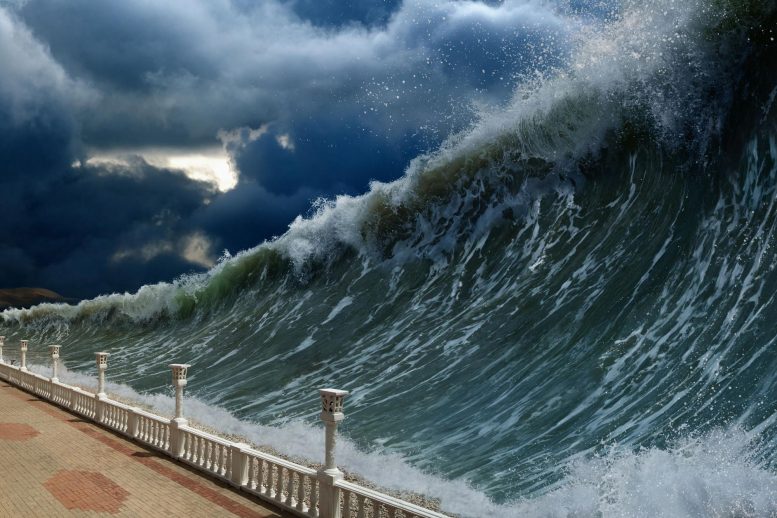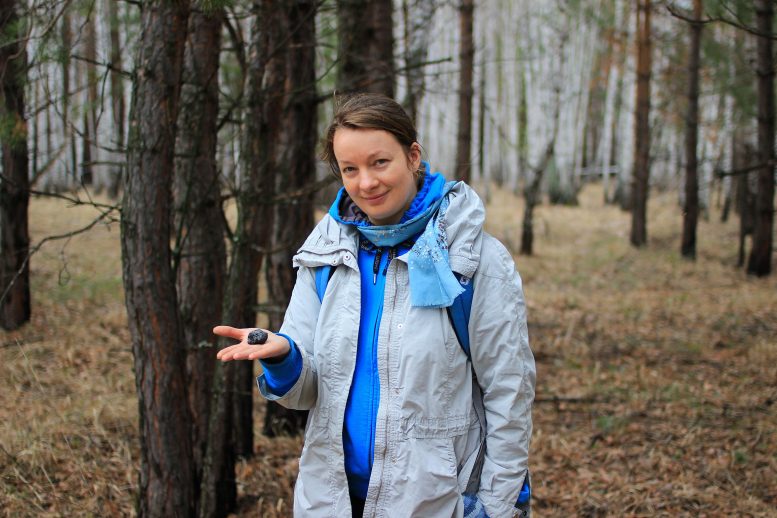
Tsunami Illustration
This threatens with sudden destruction of coastal cities and numerous human casualties.
An international team of scientists from 20 countries identified 47 problems that hinder the successful prevention and elimination of the consequences of the tsunami. Based on the carried out analysis, the world’s leading experts on natural hazards have outlined directions for further scientific research. The research group’s review is published in a special issue of the Frontiers in Earth Science.
The main problems identified in the review are related to the large gaps and uncertainties in knowledge about tsunami, the lack of well-documented observations, and imperfect methods of processing available information. One of the reasons is the lack of coordination of the efforts of those countries for which the study and prediction of tsunamis, forecasting the corresponding risks, and preparation for repelling threats are vital.
“Generally accepted approaches have not yet been determined, potentially incompatible probabilistic methods are used in different regions of the world, and different sources of tsunamis are often considered independently of each other,” said the authors of the research.
Maria Gritsevich, senior researcher at the Extra Terra Consortium laboratory at the Ural Federal University and at the Finnish Geospatial Research Institute, adjunct professor in planetary sciences at the University of Helsinki points out that the asteroid-comet hazard is associated with the origin of the tsunami as well.

Maria Gritsevich recalled that the impact of an asteroid into the Gulf of Mexico 65 million years ago led to the extinction of a large number of animal species, including dinosaurs. Credit: UrFU / Grigory Tkachenko
“Science knows more than one million asteroids in the solar system,” says Maria Gritsevich. “In total, according to the estimates, more than 150 million asteroids exceeding 100 meters (330 feet) in size revolve around the Sun. Since the ocean occupies more than 70% of the Earth’s surface, collision of any of these celestial bodies with our planet may cause a strong tsunami. Let’s recall that the impact of an asteroid into the Gulf of Mexico 65 million years ago led to the extinction of a large number of animal species, including dinosaurs.”
The main terrestrial sources of the origin of tsunamis are abnormally strong and rapid fluctuations in atmospheric pressure, volcanic eruptions, earthquakes (on land and underwater), crustal movement, and landslides. Often these forces are interconnected. However, humanity does not have reliable historical and detailed modern data to take into account the interdependence of these factors. This leads to difficulty in predicting the time and place of each next tsunami.
Moreover, due to the uncertainties, scientists studying the natural phenomena that cause tsunamis often ignore this connection. Although tsunamis can be even more destructive and deadly. According to the authors of the review, this approach is typical, for example, for volcanologists. As a result, systematic analysis of information about tsunamis in volcano studies is often omitted the authors of the review state. In addition, the power of computer technologies used to predict tsunamis is insufficient to meet the challenges. The numerical models themselves are too complex and costly.
Due to a combination of reasons, many coastal cities, especially in developing countries, are not ready to “receive” the tsunami, to adequately assess the possible damage and losses. This is reflected, for example, in the construction of buildings and structures. Schools and hospitals, industrial enterprises, harbors, roads and bridges, power plants (including atomic ones), gas and oil storage facilities, and various communications are under the threat of destruction. And most importantly, so are the lives of many people.
“Buildings are often used as evacuation shelters,” says the authors of the review. “Tsunamis affect the lower floors of a high-rise building, while seismic loads affect the upper ones. But tsunami effects such as basement erosion and debris impact are rarely modeled. These effects remain to be investigated.”
Thus, there is no clear idea about the potential economic damage and costs required to combat tsunamis and their consequences. The quality of disaster risk management — who and what, from what harm, at what cost, and how to protect — often leaves much to be desired. In most cases, assistance arrives late, leaving affected communities in a vulnerable position, especially in the first hours and days after the event, states the authors’ review.
“We call for the creation and continuous enrichment of unified databases, for conduction of the necessary research and regular exchange of information, for improving the methods of analysis and modeling, and careful planning of actions in case of cascading natural disasters,” says Maria Gritsevich. “We are convinced that with proper funding, with the availability of the necessary scientific equipment and technology, it is quite possible to bridge the gaps in understanding the tsunami phenomenon that we have identified.”
Reference: “Probabilistic Tsunami Hazard and Risk Analysis: A Review of Research Gaps” by Jörn Behrens, Finn Løvholt, Fatemeh Jalayer, Stefano Lorito, Mario A. Salgado-Gálvez, Mathilde Sørensen, Stephane Abadie, Ignacio Aguirre-Ayerbe, Iñigo Aniel-Quiroga, Andrey Babeyko, Marco Baiguera, Roberto Basili, Stefano Belliazzi, Anita Grezio, Kendra Johnson, Shane Murphy, Raphaël Paris, Irina Rafliana, Raffaele De Risi, Tiziana Rossetto, Jacopo Selva, Matteo Taroni, Marta Del Zoppo, Alberto Armigliato, Vladimír Bureš, Pavel Cech, Claudia Cecioni, Paul Christodoulides, Gareth Davies, Frédéric Dias, Hafize Basak Bayraktar, Mauricio González, Maria Gritsevich, Serge Guillas, Carl Bonnevie Harbitz, Utku Kânoglu, Jorge Macías, Gerassimos A. Papadopoulos, Jascha Polet, Fabrizio Romano, Amos Salamon, Antonio Scala, Mislav Stepinac, David R. Tappin, Hong Kie Thio, Roberto Tonini, Ioanna Triantafyllou, Thomas Ulrich, Elisa Varini, Manuela Volpe and Eduardo Vyhmeister, 29 April 2021, Frontiers in Earth Science.
DOI: 10.3389/feart.2021.628772
Note
In 80% of cases, tsunamis are caused by seismic disturbances, as a result of which deformation (rise and fall) of the seabed occurs. The deadliest tsunami in the 21st century occurred on December 26, 2004, in the Indian Ocean, the death toll and missing persons — more than 235 thousand people. On March 11, 2011, a tsunami destroyed the Fukushima-1 nuclear power plant in Japan. The death of more than two thousand people over the next few years is associated with the disaster at the nuclear power plant.
This authors’ review was based upon collaborative work within the COST Action CA18109 AGITHAR, supported by COST (European Cooperation in Science and Technology).









Has anyone looked into the shapes and designs of pyramids being the answer for your questions of how to build structures for protection. Thought about it a long time ago. Would help ease a wave(tidal or shock) as well as base itself against the earth to strength itself instead of falling apart or getting blown away. And recently viewed the inside of one of gyza pyramids burial chambers, shaped perfectly to preserve a tomb looking like it was just finished, thousands of years later and it hasn’t shifted in sand; or collapsed upon itself. Maybe they it figured out a long time ago, perhaps shown, or survived themselves from last time anything like this happened last and the preservation of em helped pass along their message of survival, that’s my take on it. Along with other mathematical phenomenon to go along with em, they were meant to not just marvel us but to be significant in so many ways that we would see the importance of em, help preserve em, and give us the best chance of surviving as a species.